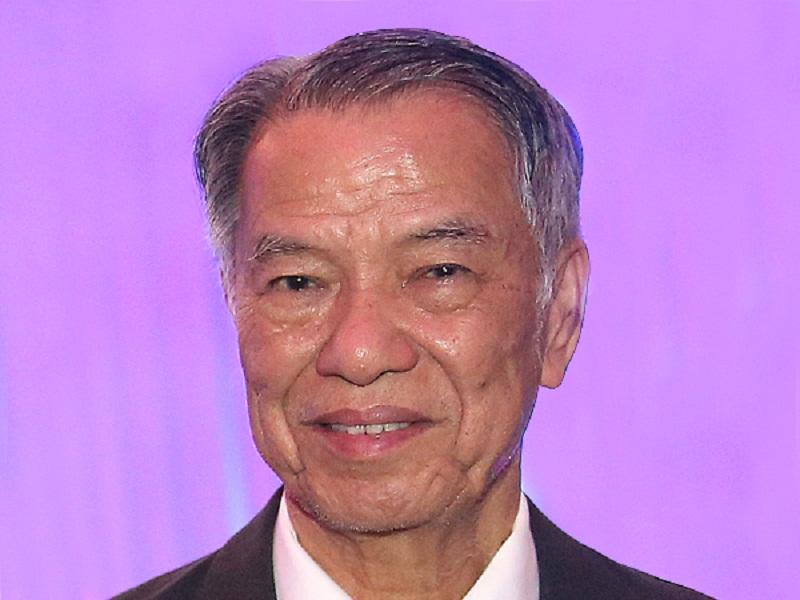Lucio Tan firm, Chinese infra giant sole bidder for $10B Cavite airport project

MANILA, Philippines — A Chinese state-owned company and Philippine Airlines owner Lucio Tan forged an alliance to transform a former Air Force base in Sangley Point, Cavite into an international gateway to decongest Manila’s Ninoy Aquino International Airport (Naia).
China Communications Construction Co. Ltd. (CCCC), one of the country’s biggest infrastructure firms, and partner MacroAsia Corp., a publicly-listed aviation services firm owned by Tan, were the sole bidders for the Cavite government’s planned P500 billion Sangley Point International Airport.
“Upon perusal of their submission, their joint venture proposal was deemed complete, subject to detailed evaluation by the PPP (Public Private Partnership) selection committee,” Jesse Grepo, legal officer and secretary of the committee, said in a text message as the bid was opened Tuesday.
Five other potential bidders, including Manuel V. Pangilinan’s Metro Pacific Investments Corp. and Manuel Villar Jr.’s Prime Asset Ventures, did not submit proposals.
With no challengers, the CCCC-MacroAsia consortium is poised to win the project, which was structured as a venture with the local government unit, meaning it will not need the approval of agencies such as the National Economic and Development Authority to proceed.
Grepo said the review will likely last through next year with a potential awarding date on Jan. 15, 2020. A ceremonial ground breaking could also happen on the same month, should the consortium meet all technical and financial requirements, he said.
MacroAsia officials did not respond to requests for comment on Tuesday.
The Sangley Point International Airport is the Cavite government’s response to congestion in Naia, which is located at a straight line distance of about 11-kilometers away.
It will require the reclamation of over 1,400 hectares of land around the current Danilo Atienza Air Base, the formal name of the existing Sangley Airport.
Eventually, the facility will be turned into a massive air hub with four runways and terminals capable of handling 100 million passengers annually— three times the design limits of Naia.
Some experts also believed Sangley’s proximity to Naia meant certain limitations for simultaneous operations.
In the Sangley project study, which was seen by the Inquirer, it was recommended that Naia focus operations on its main international runway. It acknowledged that some of Naia’s existing approach and departure airspace routes “overlap” with the airspace required for similar key structures at the Sangley Airport.
The Sangley Point International Airport has also drawn criticism for its close association with the Chinese government. In its project study, the airport plan was described as aligned with China’s One Belt, One Road cross-border infrastructure plan.
“We see no problems with regard to national security,” Grepo said. He added that the project contained no sovereign guarantees and the offer on the table has a local partner, MacroAsia.
CCCC-MacroAsia was among seven groups that formally expressed their interest to bid by acquiring joint venture documents, which were issued last Oct. 11.
The other companies were Metro Pacific, Prime Asset Ventures, and Philippine Airport Ground Support Solutions Inc. led by businessman Jefferson Cheng. The two other entities were Langham Properties Inc. and Mosveldtt Law Offices.
Some of the bidders sought more time but requests were turned down by the Cavite government, which extended the first deadline on Nov. 25 to Dec. 17 this year.
Earlier, the Cavite government said the first phase of the project could be opened as early as 2022 with a capacity of 25 million passengers annually.
The current Sangley Airport is being readied by the Department of Transportation (DOTr) to handle general aviation and turboprop operations. The airport now has a 2,400-meter runway, a terminal for 160 passengers and an apron that can accommodate up to five turboprop planes.
The DOTr expects to be reimbursed for costs it incurred should the Cavite government’s plan push through, Transportation secretary Arthur Tugade earlier said.
The Sangley Point International Airport is part of the DOTr’s so-called multi gateway strategy to address congestion in Manila and nearby provinces.
Other gateways in the pipeline include San Miguel Corp.’s New Manila International Airport in Bulacan province and the ongoing expansion of the Clark International Airport in Pampanga province.
Naia itself is set to be upgraded via a 15-year proposal submitted by the Naia Consortium, a group of seven business groups that include Metro Pacific and another Tan-led firm called Asia Emerging Dragon.
MacroAsia president and chief operating officer Joseph Chua said in an interview last month that both airports can operate simultaneously.
“There is no conflict between Naia and Sangley. Although they are in close proximity, the aerodrome can be shared. It’s just a matter of management,” Chua said.